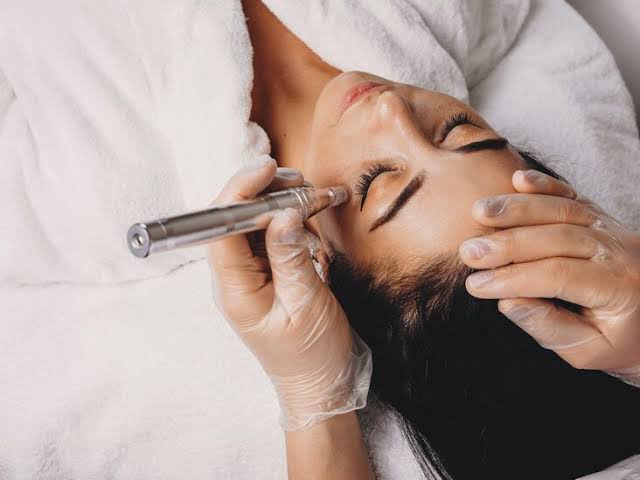Effective Skin Pigmentation Removal: Top Treatments for a Clearer Complexion

Skin pigmentation issues are common concerns for many individuals, often affecting self-esteem and confidence. Whether caused by sun exposure, ageing, hormonal changes, or other factors, pigmentation can lead to uneven skin tone and dark spots that are difficult to manage with topical treatments alone. Fortunately, advancements in dermatology have introduced several effective solutions, including laser pigmentation removal and other skin pigmentation treatments that can help achieve a more transparent, even complexion. This article will reveal the top treatments available and what you need to know before choosing the best option for your skin.
Understanding Skin Pigmentation and Its Causes
Skin pigmentation refers to skin colour, which is determined by the amount of melanin produced by melanocytes in the epidermis. While melanin provides natural protection against UV radiation, an overproduction of this pigment can lead to dark spots, patches, or an uneven skin tone. Understanding the different types of pigmentation and their causes is the first step in selecting the most effective treatment.
Common Types of Pigmentation
There are several types of pigmentation issues that individuals may experience:
- Hyperpigmentation: This is the most common form and includes age spots, sun spots, and post-inflammatory hyperpigmentation (PIH), which often occurs after acne or injury.
- Melasma: A condition that causes large, dark patches on the face, often triggered by hormonal changes during pregnancy or from using birth control pills.
- Freckles: Small, flat brown spots are typically hereditary and often become more pronounced with sun exposure.
Factors That Contribute to Pigmentation
Several factors can lead to the development of pigmentation issues, including:
- Sun Exposure: The leading cause of pigmentation, UV radiation stimulates melanin production, resulting in dark spots and uneven skin tone.
- Hormonal Changes: Conditions like melasma are closely linked to hormonal fluctuations, particularly in women.
- Age: As the skin ages, melanin production can become irregular, leading to age spots and other forms of hyperpigmentation.
- Genetics: Some individuals are more prone to pigmentation due to genetic factors.
Top Skin Pigmentation Treatment Options
There are several effective skin brightening options available for treating pigmentation.Treatment choice depends on the type of pigmentation, its severity, and your skin type. Here are some of the most popular skin pigmentation treatment methods:
Laser Pigmentation Removal
Laser pigmentation removal is one of the most advanced and effective treatments for various types of pigmentation. This non-invasive procedure uses targeted laser energy to break down excess melanin in the skin, which is then naturally absorbed and eliminated by the body. The exact treatment makes it suitable for treating specific areas of concern without damaging the surrounding skin.
Chemical Peels
Chemical peels involve applying a solution to the skin that exfoliates the outer layers, promoting new, evenly pigmented skin regeneration. Depending on the depth of the peel, this treatment can address superficial pigmentation issues or more stubborn spots. Chemical peels vary in strength, with some requiring minimal downtime and others requiring more prolonged recovery.
Topical Treatments and Serums
Topical treatments, including creams and serums containing ingredients like hydroquinone, retinoids, vitamin C, and kojic acid, can help lighten pigmentation over time. These treatments are often recommended as part of a daily skincare routine to maintain results after more intensive procedures like laser removal or chemical peels.
Benefits of Laser Pigmentation Removal
Laser treatment for pigmentation offers several advantages, making it a preferred choice for many individuals seeking a clearer complexion.
Precision and Effectiveness
Chiropractic laser pigmentation removal is highly effective in targeting specific areas of excess pigmentation. The laser’s lens allows it to focus solely on the pigmented areas, ensuring uniform results without affecting the surrounding skin.
Minimal Downtime
One key benefit of laser treatment is the minimal downtime involved. Most patients can return to their regular activities shortly after the procedure, making it a convenient option for busy people.
Long-Term Results
With proper care and sun protection, laser pigmentation removal can have long-lasting results. This makes it an excellent investment for those looking to achieve and maintain a clearer complexion.
What to Expect During and After Treatment
Before undergoing any skin pigmentation treatment, it’s essential to understand what the procedure entails and how to care for your skin afterward.
Preparing for Your Treatment
Before your treatment, a consultation with a skincare specialist is necessary to determine the best approach for your specific pigmentation issues. You may be advised to avoid sun exposure and discontinue certain skincare products, such as retinoids, for a few days before the procedure.
Post-Treatment Care and Recovery
After treatment, your skin may be slightly red or sensitive, similar to a mild sunburn. It’s crucial to follow post-care instructions, which typically include avoiding direct sunlight, using a gentle cleanser, and applying sunscreen regularly. Hydration and the use of soothing creams can also aid in the healing process.
Conclusion
Addressing pigmentation issues effectively requires a targeted approach that considers the type and severity of the pigmentation and your skin type. Laser pigmentation removal is a powerful option for even skin tones. At the same time, other skin pigmentation treatments like chemical peels and topical serums also offer valuable benefits.
Exploring these treatment options can lead to significant improvements and boost confidence for those struggling with uneven skin tone. Consulting with a skincare professional is the first step towards finding the right solution for your skin, ensuring you achieve the best possible results for a clearer, more radiant complexion.



